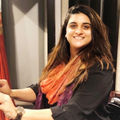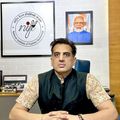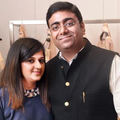Interviews
Smart textiles & wearable technology market to boom
29 Feb '12
3 min read
The market for smart textiles and wearable technology is set for rapid growth. This sector holds the potential to change the way people dress, communicate, respond to emergencies, manage their health and even entertain themselves.
Smart textiles are textiles which can sense and react to an environment or stimulus -- including heat or light -- or have been treated to provide added functionality, such as stain resistance or odour control.
Clothing which incorporates wearable technology, meanwhile, refers to garments which incorporate technology in their designs. Examples of wearable technology include garments that incorporate music players or smartphones, or sportswear which incorporates sensors to track an athlete's performance.
Demand for smart textiles and wearable technology will be fuelled by the public's fascination with high technology -- especially among the Internet generation, which has a close affinity with electronic and other high-tech devices such as iPods and smartphones.
In particular, the huge and growing popularity of smartphones will lead to an increase in the use of smart textiles, especially those designed for sensing and monitoring.
It is estimated that 70% of mobile phones and the majority of new laptops have Bluetooth Low Energy (BLE) technology. This technology will enable many new sensor-based devices to connect to the Internet via mobile phones.
The use of sensor-based devices and other electronics is growing rapidly and it has been estimated that there will be around 300 mn sensor-based devices on the market by 2016.
The use of physiological monitoring systems in particular is expected to expand dramatically in the years ahead. These will be capable of monitoring changes in heart rate, body temperature breathing regularity and activity levels in order to provide indications of health or potential problems.
The cost of health care is set to increase significantly as a result of the ageing of populations, especially in developed countries, and this will create demand for alternative methods of delivering health care which wearable technology could help to meet.
That said, physiological monitoring systems need to be made more user-friendly and accessible before the over-60s fully embrace these innovations.
Furthermore, barriers to the widespread adoption of smart textiles and wearable technology will need to be surmounted if the sector is to fulfil its potential and become more than a tiny niche market which is confined to specialist applications such as protective apparel and military wear. In particular, issues such as power supply and costs must be addressed.
On the positive side, the production of smart textiles and wearable technology will become increasingly cost effective as the cost of electronics continues to decline. Moreover, developments are being made to improve the integration of batteries into textile structures.
But problems regarding the size of batteries, their short lives and laundering issues are still challenges which need to be overcome in order for the market to continue to expand significantly.
Smart textiles are textiles which can sense and react to an environment or stimulus -- including heat or light -- or have been treated to provide added functionality, such as stain resistance or odour control.
Clothing which incorporates wearable technology, meanwhile, refers to garments which incorporate technology in their designs. Examples of wearable technology include garments that incorporate music players or smartphones, or sportswear which incorporates sensors to track an athlete's performance.
Demand for smart textiles and wearable technology will be fuelled by the public's fascination with high technology -- especially among the Internet generation, which has a close affinity with electronic and other high-tech devices such as iPods and smartphones.
In particular, the huge and growing popularity of smartphones will lead to an increase in the use of smart textiles, especially those designed for sensing and monitoring.
It is estimated that 70% of mobile phones and the majority of new laptops have Bluetooth Low Energy (BLE) technology. This technology will enable many new sensor-based devices to connect to the Internet via mobile phones.
The use of sensor-based devices and other electronics is growing rapidly and it has been estimated that there will be around 300 mn sensor-based devices on the market by 2016.
The use of physiological monitoring systems in particular is expected to expand dramatically in the years ahead. These will be capable of monitoring changes in heart rate, body temperature breathing regularity and activity levels in order to provide indications of health or potential problems.
The cost of health care is set to increase significantly as a result of the ageing of populations, especially in developed countries, and this will create demand for alternative methods of delivering health care which wearable technology could help to meet.
That said, physiological monitoring systems need to be made more user-friendly and accessible before the over-60s fully embrace these innovations.
Furthermore, barriers to the widespread adoption of smart textiles and wearable technology will need to be surmounted if the sector is to fulfil its potential and become more than a tiny niche market which is confined to specialist applications such as protective apparel and military wear. In particular, issues such as power supply and costs must be addressed.
On the positive side, the production of smart textiles and wearable technology will become increasingly cost effective as the cost of electronics continues to decline. Moreover, developments are being made to improve the integration of batteries into textile structures.
But problems regarding the size of batteries, their short lives and laundering issues are still challenges which need to be overcome in order for the market to continue to expand significantly.
Textiles Intelligence
Popular News
Leave your Comments
Editor’s Pick
Christian Guinet
French Textile Equipment Manufacturers’ Association (UCMTF)
Dr. Sameer Sood
National Institute of Fashion Technology
































-Ltd..jpg?tr=w-120,h-60,c-at_max,cm-pad_resize,bg-ffffff)





.jpg?tr=w-120,h-60,c-at_max,cm-pad_resize,bg-ffffff)
.jpg?tr=w-120,h-60,c-at_max,cm-pad_resize,bg-ffffff)






